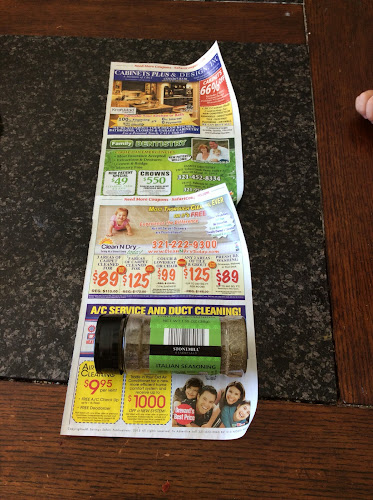So back around Thanksgiving I placed an order for a starter size portion of Red Wiggler Worms. I was starting my very first vermicomposting bin. I couldn't justify spending $30 for a pound of worms, so I bought what I could afford which was a $10 snack bag ziplock bag full of compost with several red wigglers and many eggs. I had been shredding and saving paper for about a month and had what looked like enough to fill the Rubbermaid bin I chose. Of course dry paper is fluffy and could fill the bin, but worms need almost soggy paper bedding. So I filled a grocery bag with dry maple leaves from outside, crunched them, and mixed them in with my paper bedding and moistened it all once the worms arrived. I also threw in several handfuls of sandy dirt which, according to my research, the worms ingest into their gullet to help them grind food. I added the worms and fed them, and waited for the magic to happen. Now, about six weeks later, this is what I have.

My worm bin seems to be thriving. I have many large worms, medium worms, tiny white baby worms, and just today I was even fortunate enough to see two worms coupling. Further proof that things are moving along is the decomposition of the bedding and food scraps into worm castings.
Here in the center of this photo you can see two white baby worms. Being able to see the worms moving through the bin and see the layers of compost as they break it down without having to dig around in the bin is an added bonus of using a clear bin.
Now I'll tell you a little about why I chose the setup I did and how I keep it running. Disclaimer: I AM NOT AN EXPERT. I have done extensive research, however, I lack the practical experience to say with confidence that I know what I'm doing. Think of this as journal about my verm adventures. Here we go...
I chose my bin size mostly based on the space I had available to store it. In Central Florida in the summer, a verm bin would easily overheat in the garage and the worms couldn't survive outside for the same reason. So I keep my bin easily accessible in a dark, cool kitchen cabinet. I also knew I wanted a secure bin that would dissuade the occasional palmetto bug that found it's way inside our house from setting up shop in my bin, so I chose one with handle locks. I've heard that air circulation can be tricky to get enough of for the worms, but, at the same time, drilled holes can allow flying pests easy access or escape from the bin. So I cut the middle section of the box lid out and used duct tape to adhere a double layer of window screen to the opening.

Excess water pooling in the bottom of the bin is another commonly cited problem, especially in indoor Rubbermaid type bins. I wanted to be able to easily monitor the moisture content of the bin and decide to use a clear bin. I can pick up the bin and tip it to a corner and see if any water runs to that corner. Thus far, I haven't had any excess water. If I do, I plan to drill a hole near a bottom corner and stop it with a wine cork to allow me to drain the excess without having a gaping hole in my bin.

I feed the worms produce that has been frozen and thawed to room temperature about once a week. I do this for two reasons: 1) freezing kills any fruit fly eggs that may be on the produce skins-bananas are the most common culprit of fruit flies, and 2) it speeds up the decomposition of the produce meaning the worms can process it faster. I also give them used coffee grounds on the day I feed them. I have heard they like ph conditions to the slightly acidic side which coffee grounds help provide. I also mix in bedding on these days if need be. Added bedding in bin includes: shredded brown packing paper, newspaper, a bit of corrugated cardboard, crunched dry maple leaves, and dried grass clippings. I'm not concerned about adding the leaves or grass clippings because we don't use pesticide or herbicide on our lawn and neither do our closest neighbors. The worms seem to like this mix and live thought the whole bucket. Before adding new material in I fluff and mix what's already in the worm bin with a hand rake to help aerate the bedding and keep things from getting compacted, and to check on the decomposition of the previous weeks food.
This week I added quite a bit more bedding to offset the food in the bin. I shredded the bedding and left it in a bucket, then vacuumed the detritus from the gravel of my chemical free goldfish aquarium right into the bucket with the new bedding. I did this to moisten the bedding and because, according to my research, red wigglers aid in the breakdown of fish emulsion, and the emulsion brings bio diversity to the microorganisms within the worm bin. I used my hand rake to scoop the moistened bedding out or the fish waste bucket, held it in the air and let some of the excess water run off, then put it on top of the verm bin and fluffed it up a bit. That was about three days ago, and today I saw more baby worms and the breeding worms very near the top of the box right under the fish-waste-soaked bedding. So I'd call that decision a successful one!
Thus concludes Ch 1 of Adventures in Vermicomposting!








































